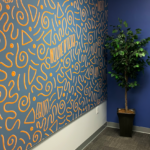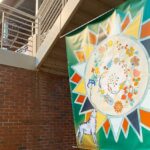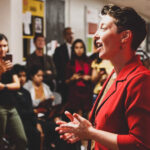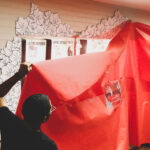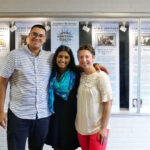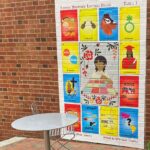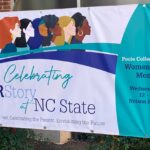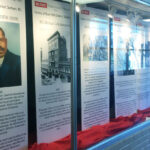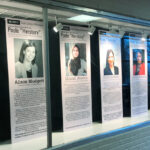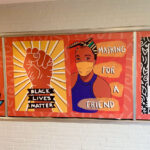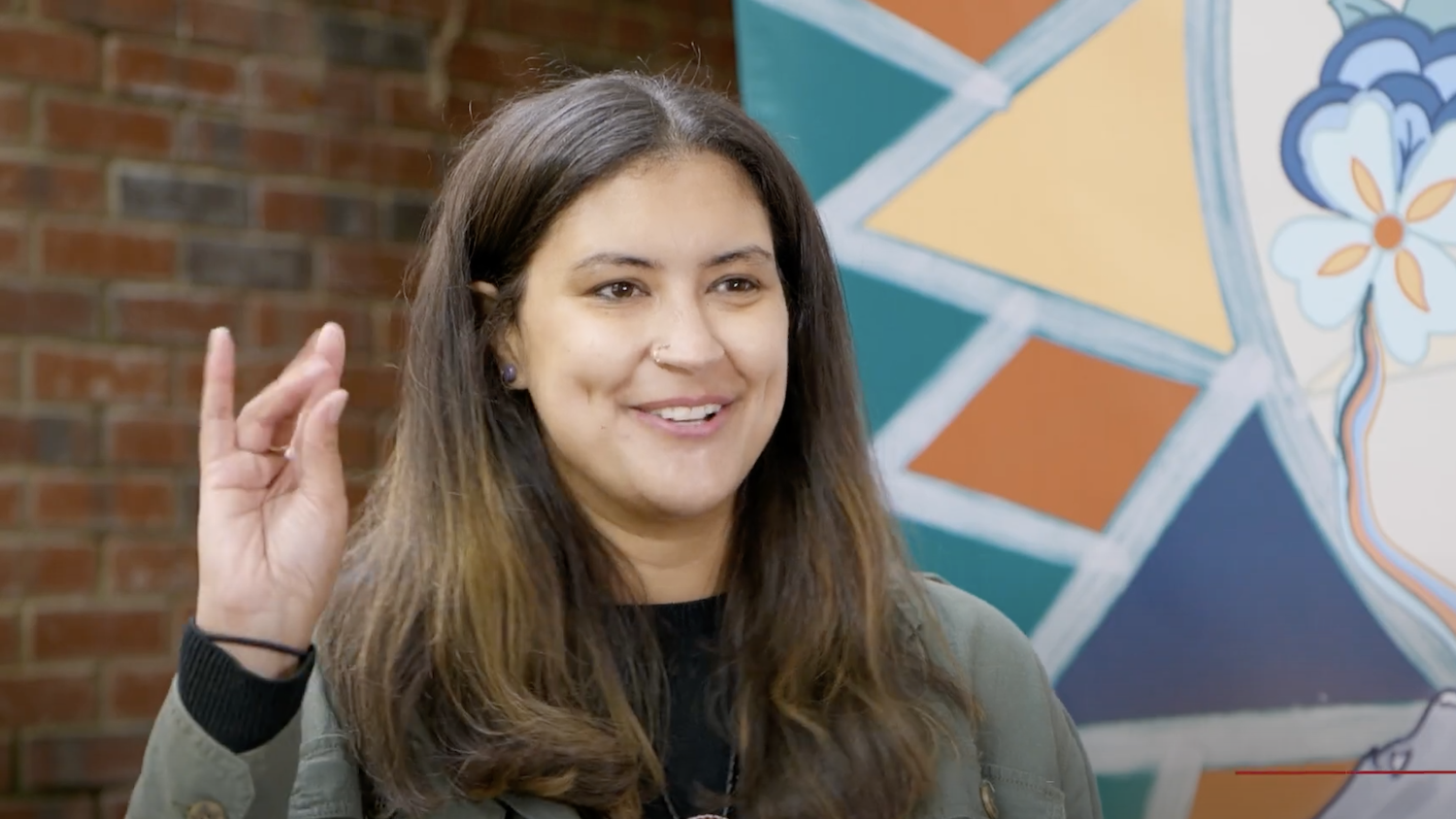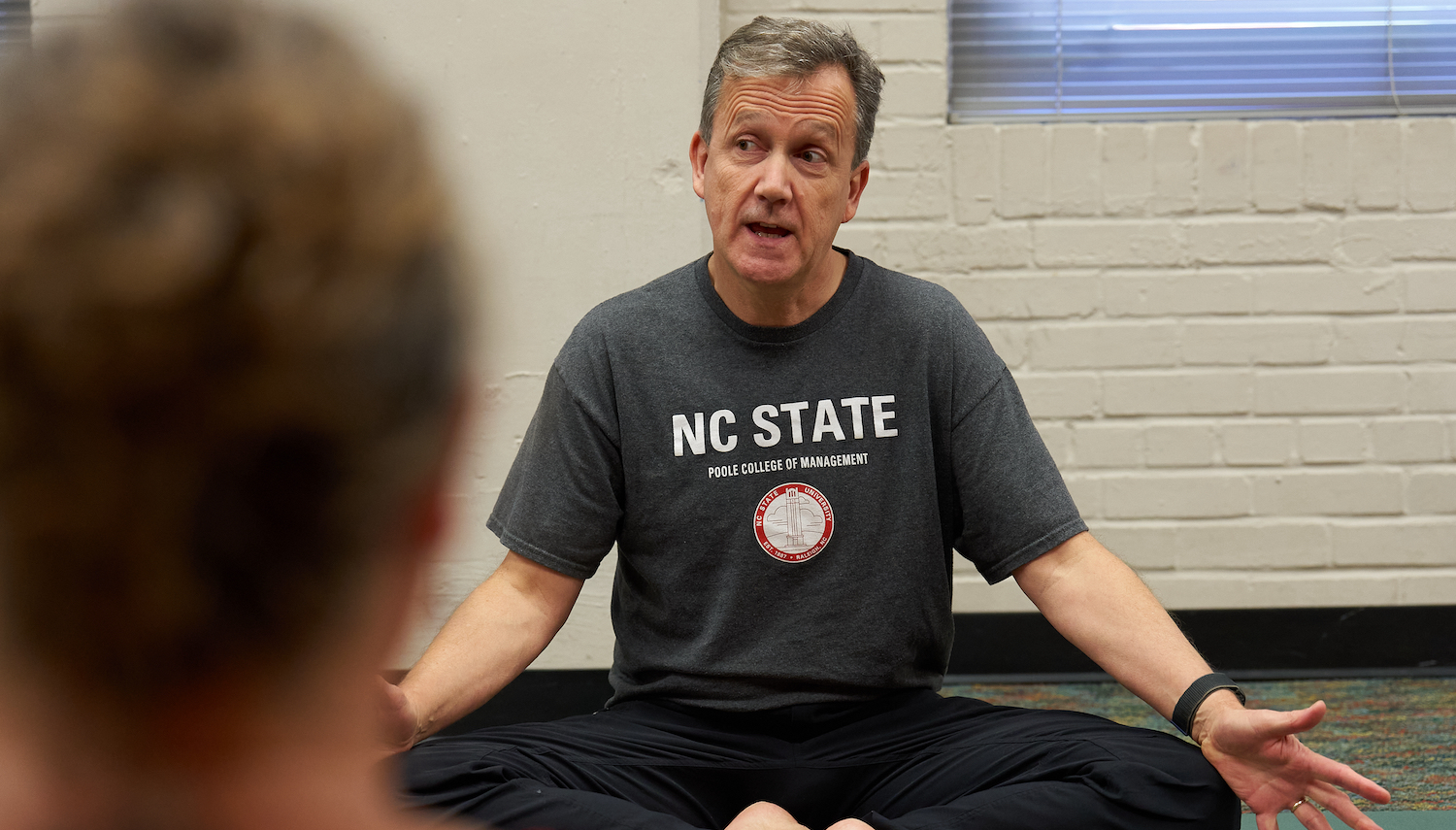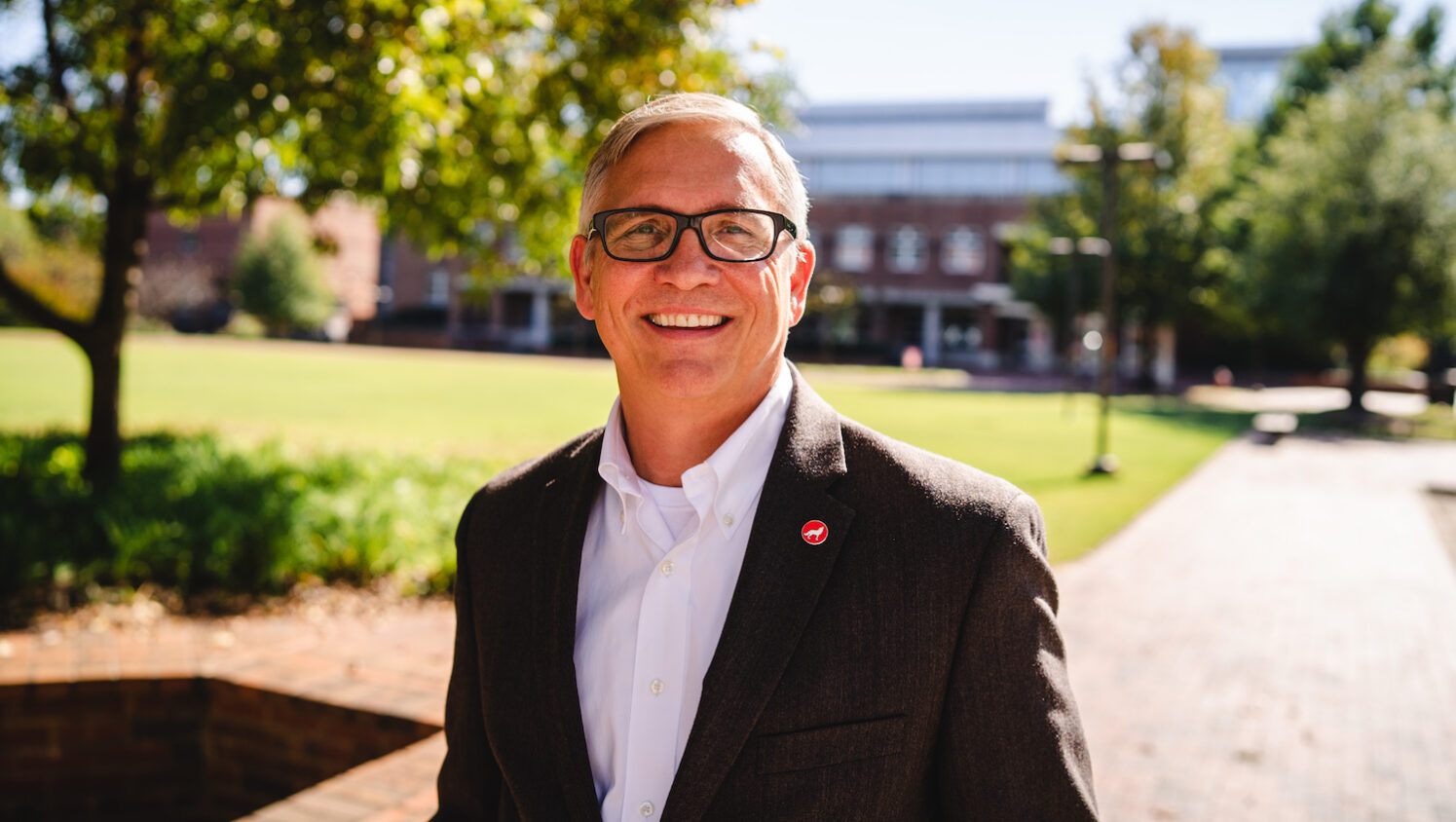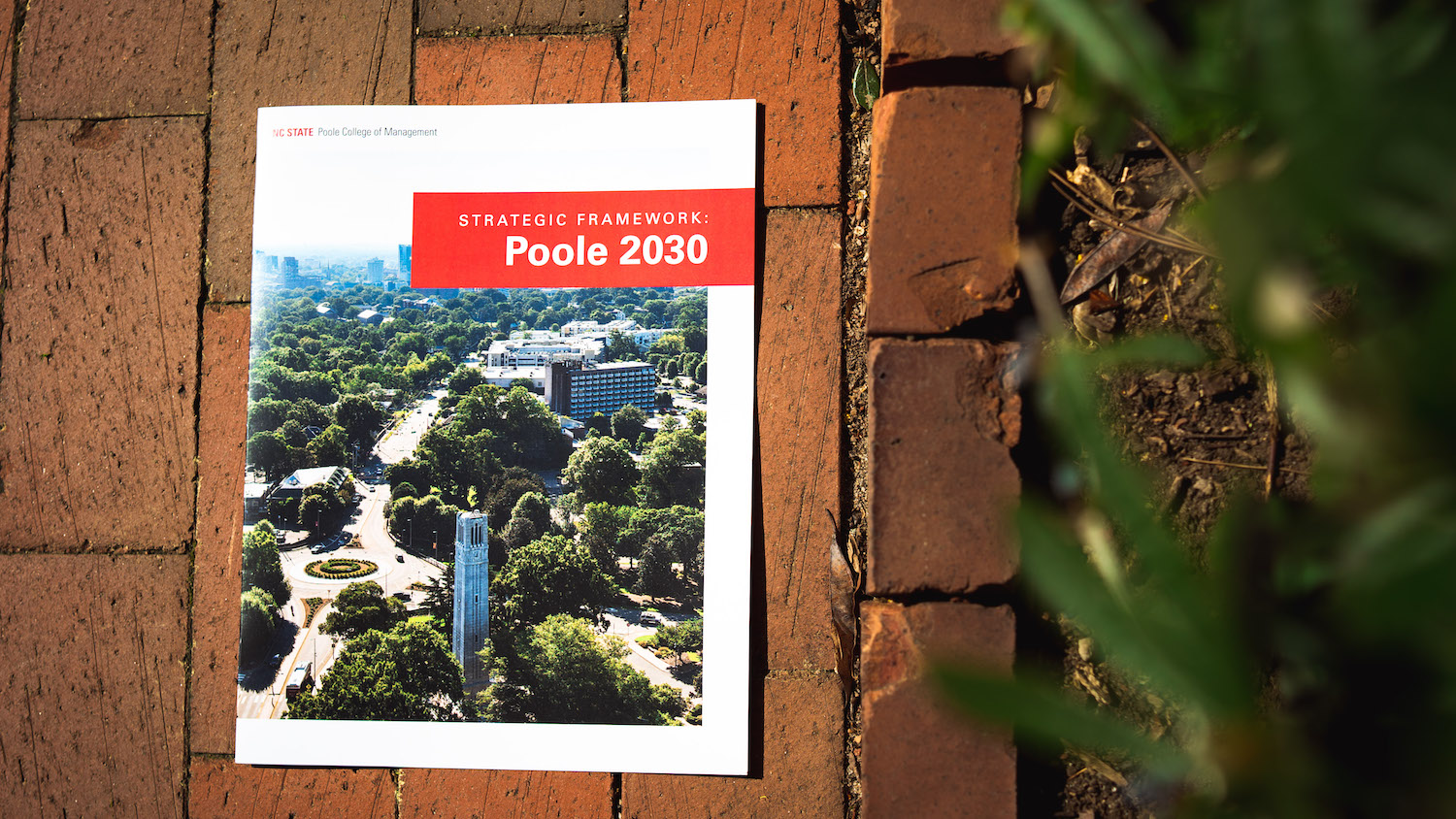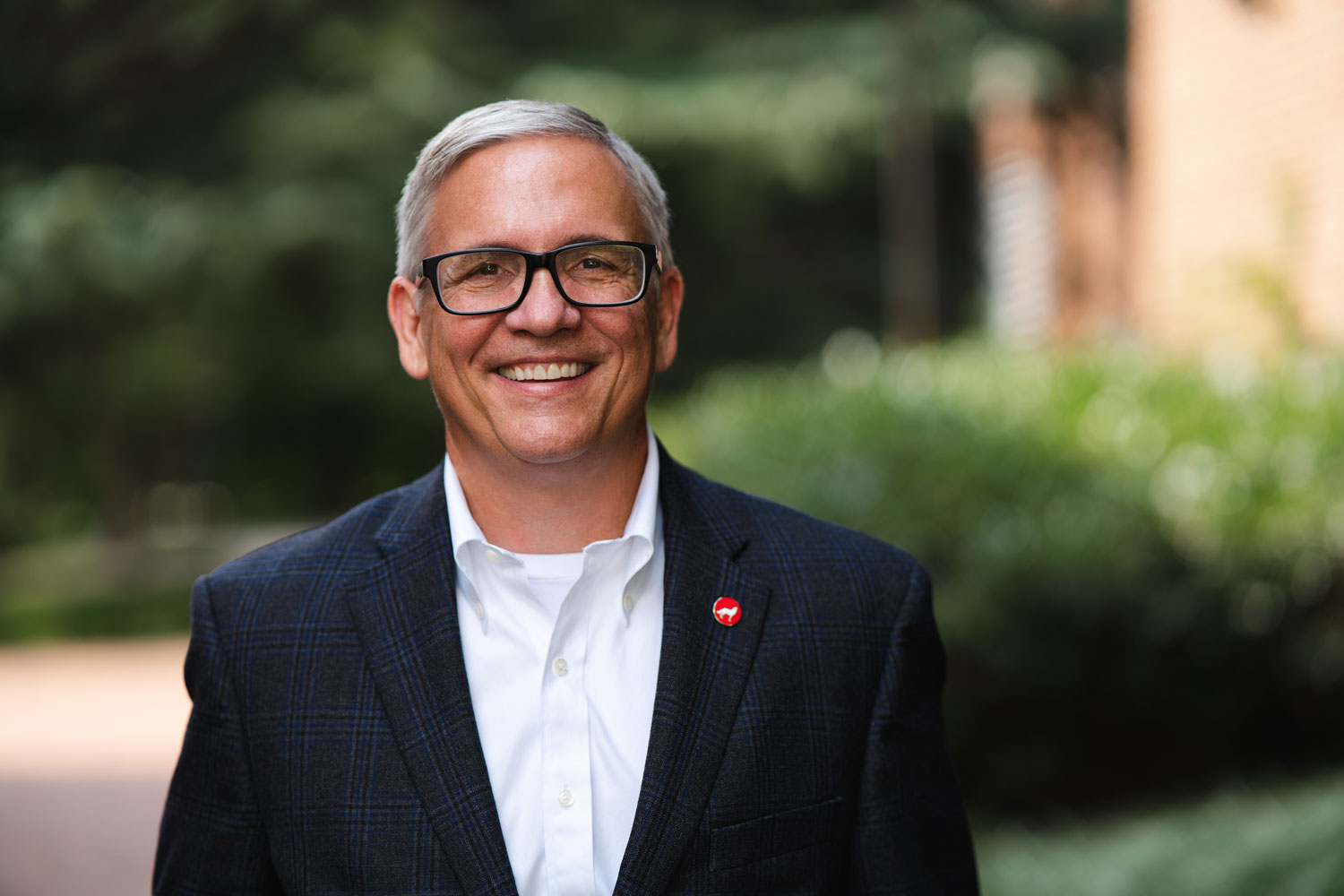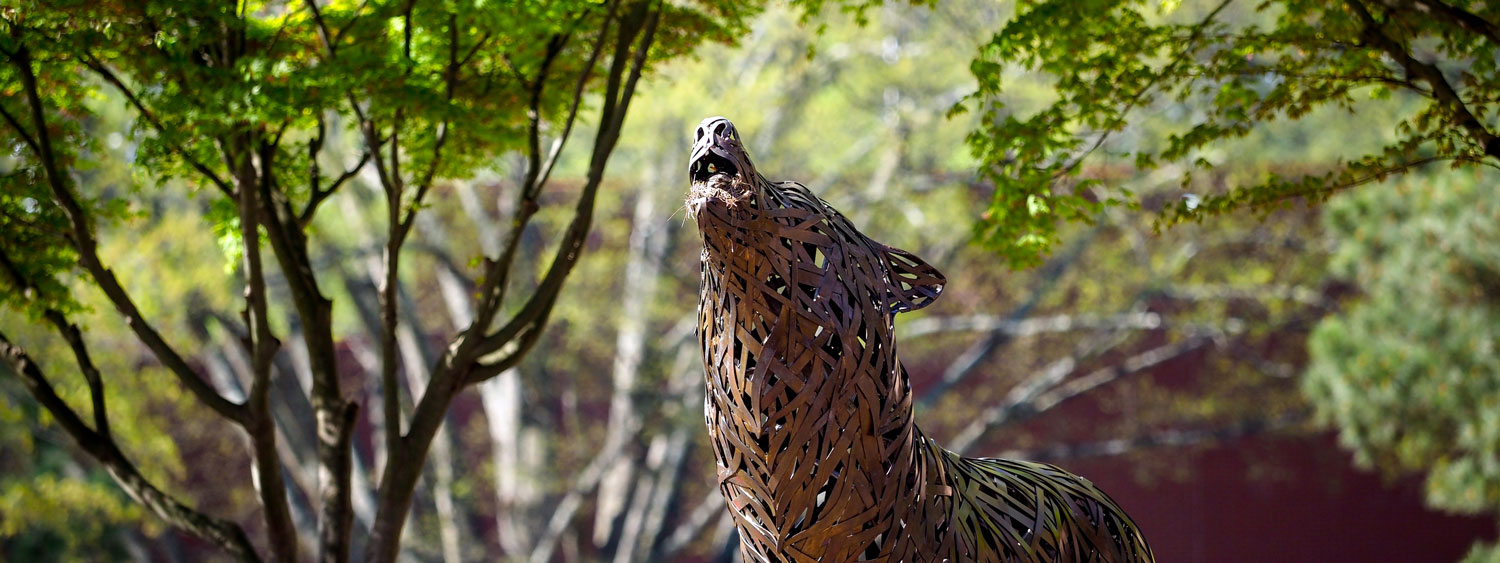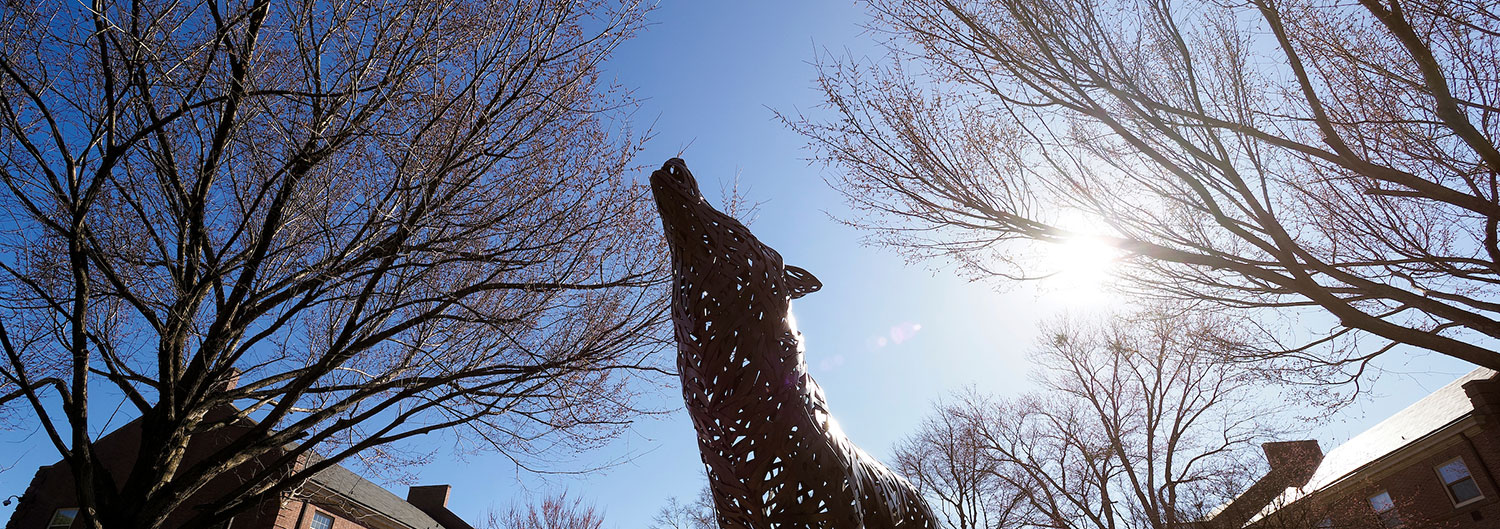The Power of Persistence: Environmental Displays Affirm Diversity
Public displays and artworks throughout Nelson Hall provide constant expression of Poole College’s support for diversity, equity, inclusion and belonging.
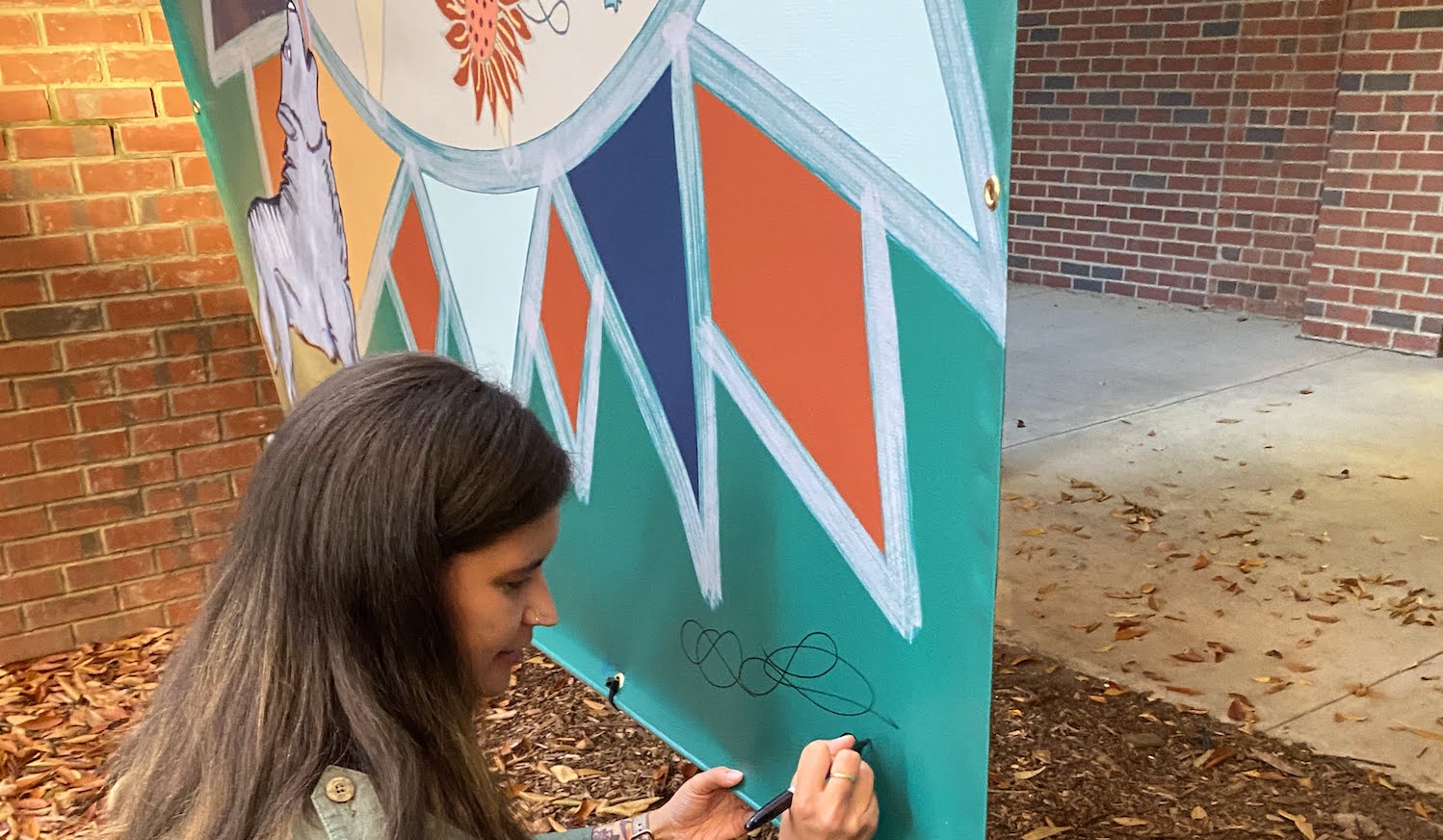
The Poole College of Management promotes diversity, equity and inclusion in a wide variety of ways, from sponsoring heritage events to supporting original research. In and around Nelson Hall, these efforts take on an even more visible form: artworks, informational posters and other displays that provide diversity-affirming messages around every corner, turning the college’s physical environment into a 3-D affirmational context for learning and life.
“To be honest with you, this whole endeavor started with an ugly old display case,” says Tayah Butler, the college’s assistant dean of diversity, equity and inclusion. “On the third floor of Nelson there was this awkward display case that was five feet deep and twenty feet long, basically a recessed hole in a wall with glass in front of it, like something you’d see in a museum with beautiful things behind it. Except there were no beautiful things behind it.”
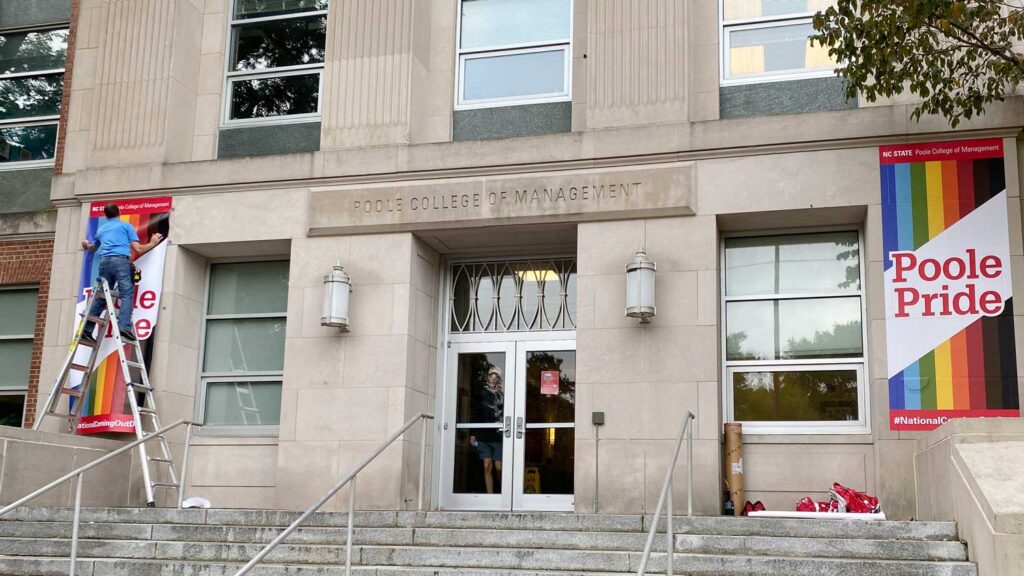
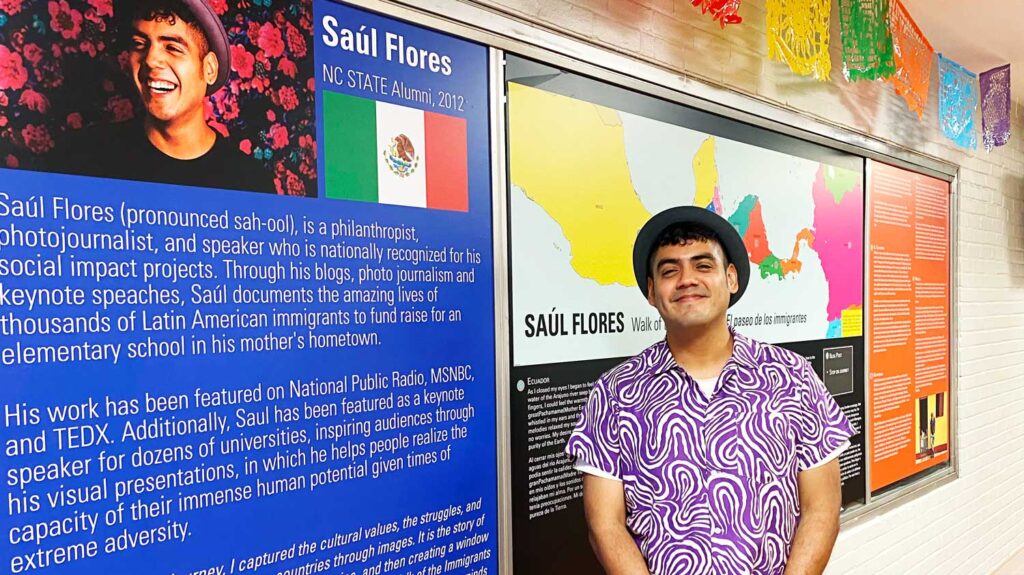
When Butler joined Poole College in 2016, this “derelict display,” as she describes it, was one of the first things she noticed — both as an eyesore and as an opportunity, because it was located in a prime piece of real estate between the college’s boardroom and its largest lecture hall. “Every day it’s being passed either by people important enough to take to our boardroom or by every student in the college,” Butler observes. “So we could fill this space with microaffirming messaging.”
Environmental microaffirmations are important because they’re always present, expressing their support for diversity on an ongoing basis.
Since then the display case has hosted messaging and artworks to commemorate Native American Heritage Month, Black History Month, Women’s Herstory Month and other diversity-affirming initiatives. In addition, the practice of environmental microaffirmation has spread to other parts of the building, including signage and banners both inside and outside Nelson Hall.
Environmental microaffirmations are important because they’re always present, expressing their support for diversity on an ongoing basis, Butler says.
“One email, one rally — that’s good, but it’s not persistent enough,” she says. “Visual displays are persistent.”
One email, one rally — that’s good, but it’s not persistent enough. Visual displays are persistent.
In 2018 Nelson Hall’s third-floor display case hosted a project called “Sueños y Cuentos” (“Dreams and Stories”), which honored Latinx Heritage Month by inviting several Latinx students from Poole College to share stories about how their parents helped them achieve their dreams.
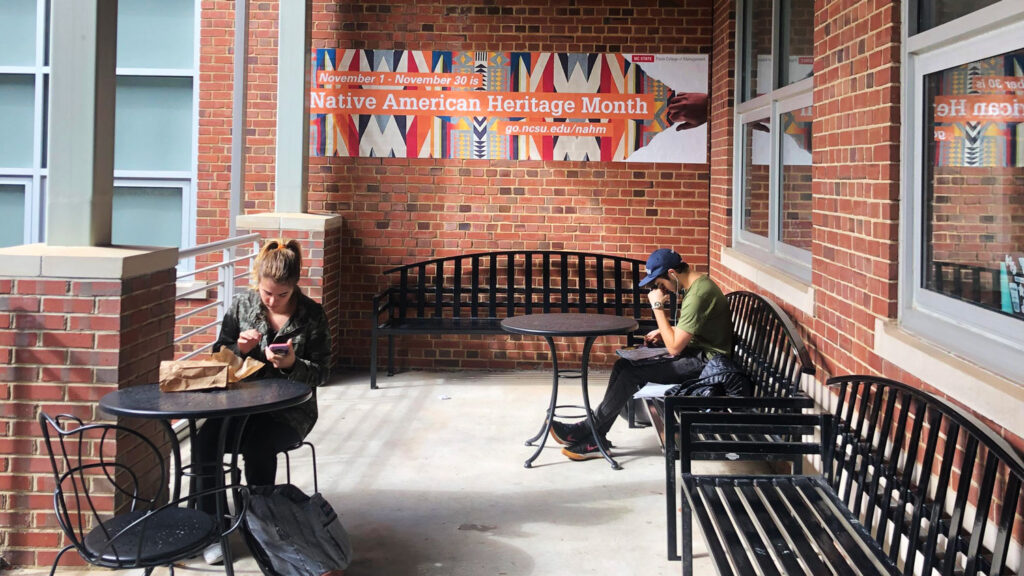
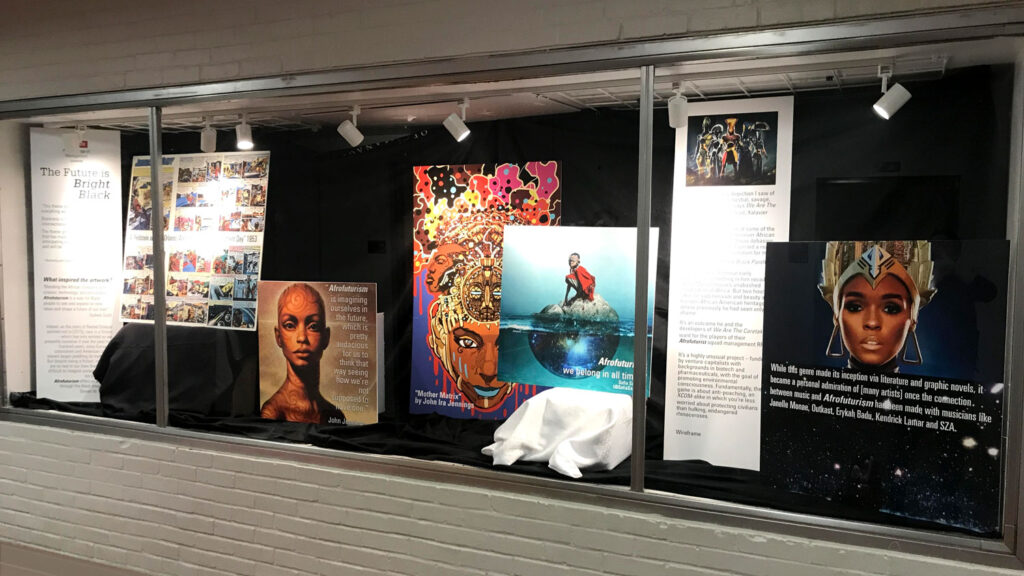
One of those students, Josue Hernandez, once considered himself a long shot to even go to NC State. As if growing up in the small town of Lumberton, North Carolina, as the child of immigrant parents who didn’t go to college wasn’t enough of an obstacle, lack of funds was an even bigger problem.
“When I was growing up, we had chickens, and sometimes we had to decide whether we were going to eat the chicken or the egg,” Hernandez recalls. “That’s how poor we were.”
His parents couldn’t give him a lot of money or advice about college, but they did give him some very useful advice about life.
“The best thing my mom and dad could do for me is to tell me to always do my best,” Hernandez says.
When he reflects on the power of the “Sueños y Cuentos” display in Nelson Hall, Hernandez focuses on its power to connect people.
He followed their advice, and after graduating in 2020 with a bachelor’s degree in business administration with a concentration in operations and supply chain management, today Hernandez works as director of operations at a Chick-Fil-A location in Durham.
When he reflects on the power of the “Sueños y Cuentos” display in Nelson Hall, Hernandez focuses on its power to connect people.
“A lot of my non-Hispanic friends who saw the display, they were reading my story and saying, ‘I had no idea you went through that,’” he recalls. “And some of my other friends learned that they had actually gone through something like that themselves. Something about storytelling allowed people to connect in a way that I don’t think they otherwise would have.”
Something about storytelling allowed people to connect in a way that I don’t think they otherwise would have.
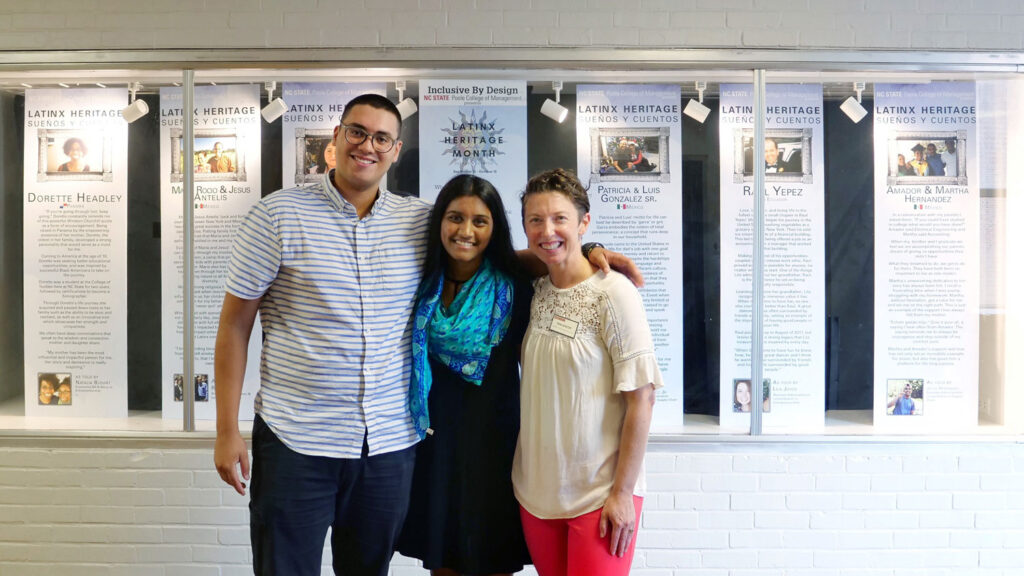
As “Sueños y Cuentos” and other microaffirmation displays throughout the college found an audience and generated interest, people started approaching Butler with more and more ideas for similar initiatives, which led to a flourishing of projects. Butler relates the story of how one day a visitor came to meet the dean, and the two were chatting in the lobby where microaffirmation displays were visible to everyone. The visitor said, “I can tell you’re living your values that you post on the internet. You’re walking your talk.”
I can tell you’re living your values that you post on the internet. You’re walking your talk.”
When some of the microaffirmation ideas ran counter to university regulations governing signage, banners and other environmental displays, Butler worked with the college’s director of facilities to determine the best way to spread microaffirmative messages in an environmental form.
“We worked together to overcome those obstacles, and now we have built a culture that this is how we operate,” Butler says. “It’s gone beyond me and has spread to people who are willing to use their power and privilege to help this happen.”
- Categories:
